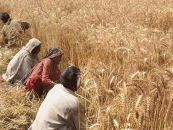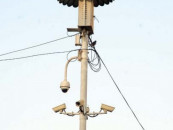Migratory birds shy away from Sindh
Despite ban on hunting, poaching and trapping remains rampant in the province, birds continue to lose habitat

Sindh has seen a dramatic decline in the number of migratory birds during the last three decades due to poaching, trapping, Afghan war, pollution of beaches and lakes, deforestation and reduction in food and habitat.
Although, the number of waterfowls, an order of swimming birds, has increased slightly in the last two years due to strict laws and heavy rainfall in different parts of the province, but their overall numbers are still low while guest birds are facing various problems.
A waterfowl census is conducted every year by the federal and provincial governments. According to a survey conducted on 22 waterways from November to January of the winter season of 2020-21 last year, 612,000 local and migratory water birds were counted in the region. In the year 2019-20, the number of domestic and guest birds was 7,42,043. In 2017-18, their population was counted to be around 1,53,916. In 2016-17, the number of these birds was 88,345, while per the 2018-19 census, their number was 98,358.
According to the 1992 census, this was the year Sindh welcomed the highest number of birds, counted to be around 1.692 million while in 1994 their number was 1 .178 million. Since then, although the number has been increasing but is yet to hit the one million mark.
Speaking in the regard, Sindh Wildlife Department Deputy Sanctury Warden Rasheed Ahmed Khan, stationed at Haleji Lake, said that water birds visit Haleji Lake from November to January, while at present these birds roosting in other parts of the province. He said that from November to January this year, the provincial and federal governments would start a series of statistics on these birds at various places including Haleji Lake, the official report of which would be completed next year.
Per information received by The Express Tribune, after the approval of Sindh Wildlife Protection, Conservation and Management Act 2020, the new laws for protection of wildlife have been made stricter than the previous laws.
The powers of the wildlife department have also been significantly increased and steps are being taken but due to lack of staff, vehicles, funds and resources, the department is still not able to work in its full spirit.
Experts of wildlife and aquatic birds however believe that hunting is legally allowed in only a few places across Sindh, but remains prohibited in the remaining 34 wildlife sanctuaries where migratory birds live. But despite the implementation of the new laws, ruthless poaching is still rampant in most of the restricted areas. While another big problem are the region’s feudal landlords, many of whom have set up private hunting grounds on their lands where they allow hunting on a commercial basis.
The Sindh Wildlife and Zoological Survey of Pakistan inspected Hawke’s Bay, Korangi Creek and 22 lakes and coastal areas along the coast of Sindh to count water birds from November 21 to January 2020-22. These lakes include Hadero, Langh, Dargah, Huml, Manchar, Nerradi, Hub Dam Mehrano, Keenjhar and Haleji and other lakes and coastal areas.
The survey revealed that the total number of water birds in this census was 6,12,397, which included native and migratory birds. Per Sindh Wildlife Deputy Director Rasheed Khan, lack of rainfall and climate change are causing small waterways to dry up. Whereas, the use of explosives in the four-decade-long Afghan war has affected the migratory birds’ route to Pakistan, and for the past several years, thousands of migratory birds have been migrating to neighboring countries instead. Furthermore, fishing on lakes, speed motor boats and other human intervention are also affecting the arrival of waterfowl.
The arrival of migratory birds in Pakistan starts from the end of August every year, the return journey starts in February and by March the migratory birds have completely migrated back from Pakistan. Rasheed Khan says that waterfowls are most common in Sindh because there dwell in both brackish and freshwater sources.
World Wide Fund for Nature’s Technical Adviser Moazzam Khan, says that there are various reasons for the decline in migratory birds. These include effects of climate change, such as lack of rainfall in the past and drying up of waterways, especially drying up of lakes at Tharparkar, Nawabshah, Sanghar, Khairpur. Furthermore, pollution of sewerage and industrial waste in the coast are also responsible for affecting the habitat of waterfowl. Moazzam Khan said that many water bodies in Sindh including Karachi have been [illegally] captured. These places, he alleges, are being used for agricultural purposes and fisheries or construction. “However, the main reason for the shortage of migratory birds is still illegal hunting and trapping. In the distant past, hunting was a hobby, not it’s a commercial-lust driven activity,” he commented.
Khan believes that the wildlife department is although trying to do better on its own, but much remains to be done. “The real issue is awareness. People should be aware that these are guest birds that travel thousands of miles for food and shelter. Therefore, instead of hunting them, they should be protected because they are our heritage,” he told The Express Tribune.
Published in The Express Tribune, November 19th, 2021.



















COMMENTS
Comments are moderated and generally will be posted if they are on-topic and not abusive.
For more information, please see our Comments FAQ